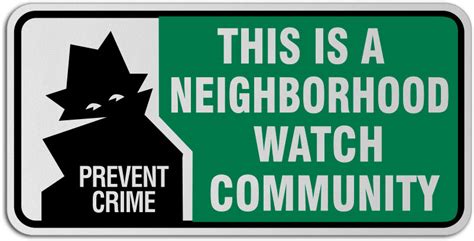Communities play a pivotal role in ensuring their collective safety and minimizing the risk of break-ins. A sense of shared responsibility and proactive measures can significantly enhance the security of a neighborhood. Here’s a look at some strategies communities can adopt to protect themselves and their properties.
Collaborative Vigilance
Neighborhood Watch Programs
Organizing neighborhood watch groups can be a powerful deterrent to criminals. These programs encourage residents to keep an eye out for suspicious behavior and to report it to law enforcement promptly. Visible signs indicating that a neighborhood watch is in place can serve as a clear warning to potential intruders.
Community Policing Efforts
Collaboration with local police can result in community policing strategies where officers are more present and engaged with the neighborhood. This presence can deter criminal activities and the officers can provide valuable advice on improving home security.
Environmental Design
Natural Surveillance
Communities can be designed or modified to increase visibility among neighbors. This concept, known as “natural surveillance,” involves strategic placement of windows, lighting, and landscape to allow neighbors to observe surrounding areas naturally, making it difficult for potential burglars to go unnoticed.
Territorial Reinforcement
Using physical attributes to express ownership, such as fences, signage, and landscaping, can define property lines clearly and create a sense of territorial control. Well-maintained spaces are typically less attractive to criminals, as they imply active involvement and observation by the community.
Education and Awareness
Security Workshops and Seminars
Hosting workshops and seminars to educate residents about home security, identity theft prevention, and online safety can empower individuals with knowledge to protect themselves and their property.
Resource Sharing
Communities can establish resource-sharing programs that may include lending security equipment or pooling funds for neighborhood-wide security improvements. By sharing resources, residents can access security measures that might otherwise be unaffordable individually.
Technology Utilization
Installation of Surveillance Cameras
Implementing a network of surveillance cameras, especially in common areas, can be a strong crime deterrent. These cameras can be monitored by residents or security professionals to keep a constant watch over the neighborhood.
Social Media and Communication Apps
Utilizing social media platforms or community communication apps allows residents to quickly share information about break-ins, suspicious activities, or security alerts, fostering a well-informed and responsive community.
Maintenance and Upkeep
Regular Maintenance
Ensuring that communal areas are well-lit, landscapes are trimmed, and abandoned properties are cared for can reduce hiding spots for burglars and contribute to the overall safety of the neighborhood.
Upgrading Infrastructure
Investing in sturdier locks, reinforced entry points, and impact-resistant glass for community buildings can prevent break-ins and can set a standard for private residences.
Community Cohesion
Fostering Strong Relationships
Strong community ties can be the backbone of a safe neighborhood. When residents know and trust each other, they’re more likely to look out for one another and work together to maintain safety.
Organizing Community Events
Regular events not only foster cohesion but also put many eyes on the street, making it less appealing for criminals who prefer to operate in anonymity.
Conclusion
Communities have a wealth of options at their disposal to enhance safety and prevent break-ins. From organized vigilance to the smart design of the living environment, the power of a united community is unmatched in creating a secure and peaceful place to live.

